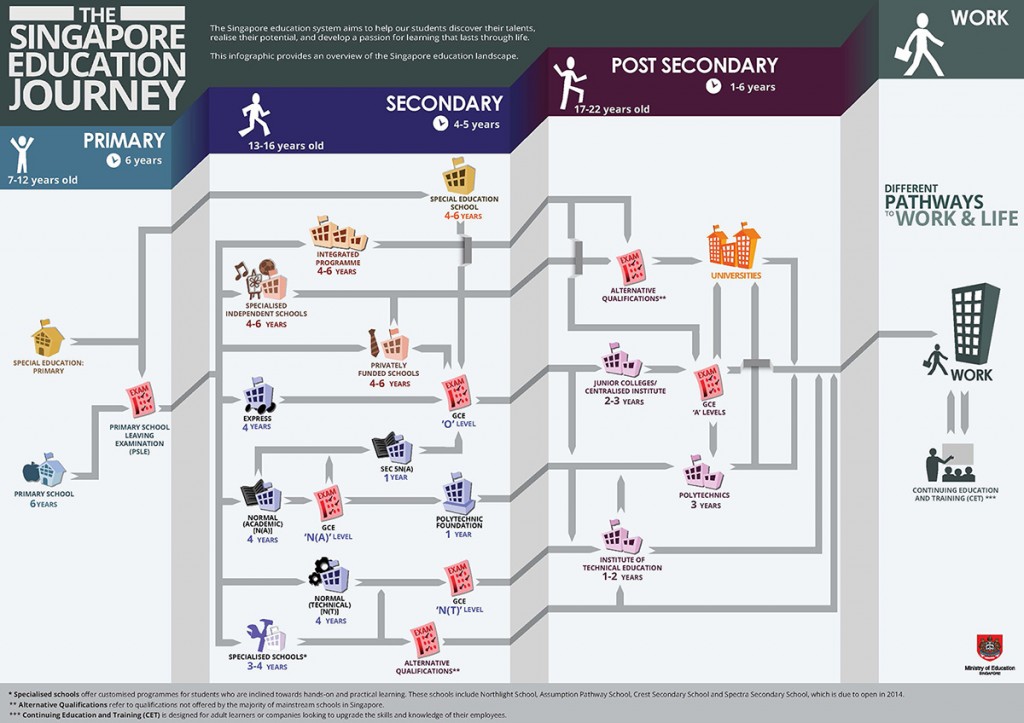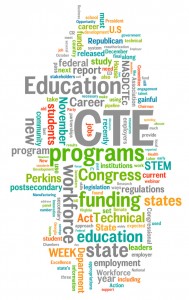Today Heather Singmaster interviews Ursula Renold, head of the Education Systems field of research in the KOF Swiss Economic Institute on the Swiss vocational education and training system (VET or career and technical education system as we call it here in the U.S.). This is the second in our series on international best practice in career and technical education (CTE), presented as part of our ongoing partnership with Asia Society’s Global Learning blog on Ed Week .Â
1. What is the progression of Vocational Education and Training (VET)/CTE in Switzerland?
Please see the chart below as well.
Students chose at age 15 if they want to pursue a traditional university route or if they will follow the vocational education pathway. All young people from eighth grade on have access to comprehensive guidance counselling. This includes access to a national, online database of available apprenticeships, career testing to see where their skills match to job or academic requirements and then assistance with applying for an apprenticeship. VET students will learn and work at an apprenticeship for three or four years, while simultaneously continuing their studies in math, science, languages, etc. These studies are tied to their career – so they are learning in the classroom and then applying those skills on the job every week.
When they finish they earn either a Certificate (for the two-year apprenticeships) or a diploma (for three- or four-year apprenticeships). More academically gifted young adults can earn a Federal Vocational Baccalaureate degree at the same time as or after the apprenticeship. This will allow them to enter directly into a University of Applied Sciences, which is a university that specializes in applied research and development. With an additional year of general education, young adults with a Federal Vocational Baccalaureate can even enter directly in a conventional university.
We have built in a high degree of permeability in the system, which allows for a multitude of career pathways for young people. There are no dead ends. With every degree there comes further education options, thus VET is a very solid foundation for lifelong learning
2. Please describe the landscape of Career Technical Education/VET in Switzerland:
- What percentage of the student population is a CTE/VET student?Â
Two out of three young adults are enrolled in VET/CTE, compared to the 25 percent of young adults who pursue the traditional university route after leaving compulsory school. However, we found that many of those students end up switching over to the vocational education pathway after a year of university or vice versa. Those with a VET background may continue their studies at universities.
- What sectors/fields of study does it encompass? Which are most popular with students?
Switzerland offers around 230 VET pathways for young adults between the ages of 15 and 19. The most popular VET sector is the commercial sector, covering about 25 percent of all apprenticeships and including industries such as banking, finance, manufacturing, retail and travel. Other highly favored VET pathways are health care and information technology (IT).
- How is CTE/VET funded in Switzerland (publicly, privately, by federal or local funds, etc.)
The VET system is run and paid for by three partners working together – the federal government (or Confederation), the states (26 Cantons) and around 600 professional organizations representing industry. Both the government and the education community are clear that the system works because it is designed to meet the needs of industry. Therefore, the VET system enjoys enormous support from the employer community. The government works closely with business to set the standards and design the curriculum, putting industry associations in the driver seat for setting program expectations and content.
Business also provides the apprenticeships and pays for more than half of the cost of the system because they regard the apprenticeship as a mid-term investment in their future workforce. Periodic cost-benefit analyses show that the costs are offset by the productivity of the apprentices during the two-, three-, or four-year apprenticeships. Employers see the system as beneficial both to themselves as well as to the students who gain experience, are paid good wages (averaging between US$700 – $1,000/month) and are treated with respect as adults.
3. What are the major goals of VET/CTE in Switzerland?
Among others, the VET/CTE system should provide young professionals with the knowledge and skills relevant to the labor market so that they easily find a well-paying and satisfying job. The VET system should articulate the skills required by the labor market. Hence, the VET system has to secure the volume of labor market quantitatively and qualitatively that is necessary for prosperity and social development.
Come back on Thursday for part two when Ursula discusses the common challenges of CTE/VET in Switzerland and the world and provides advice on overcoming them.
Follow NASDCTEc, Heather, and Asia Society on Twitter.
Katie Fitzgerald, Communications Associate




